

Reliability that counts

KMA 135 R BATTERY KOMBISYSTEM
ADAPTABLE SOLUTIONS FOR PROFESSIONALS.

The KMA 135 R battery-powered KombiEngine is a versatile tool that can efficiently loosen soil, blow debris, trim grass and hedges, prune trees, manicure paths and gardens. The use of one powerhead with 14 separate attachments welcomes more storage space and less maintenance of multiple tools. The KMA 135 R is lightweight, emission-free and quiet in operation. The effortless KMA 135 R features a brushless motor and provides the performance that landscapers and groundskeepers require to complete their work in a timely manner. The ergonomic loop handle provides greater comfort and less user fatigue. Built with three power settings to offer the momentum required for a task, while conserving battery energy and longer battery runtimes. Battery Power. Made by STIHL.
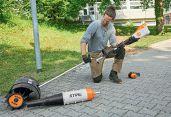
PRO-FLEET COMMERCIAL LANDSCAPE PROGRAM
STIHL’s Pro-Fleet Commercial Landscape Program is designed to provide commercial landscapers a volume discount on major purchases of five or more landscaping power tools. Visit your STIHL Dealer today to find out more and take advantage of the savings!


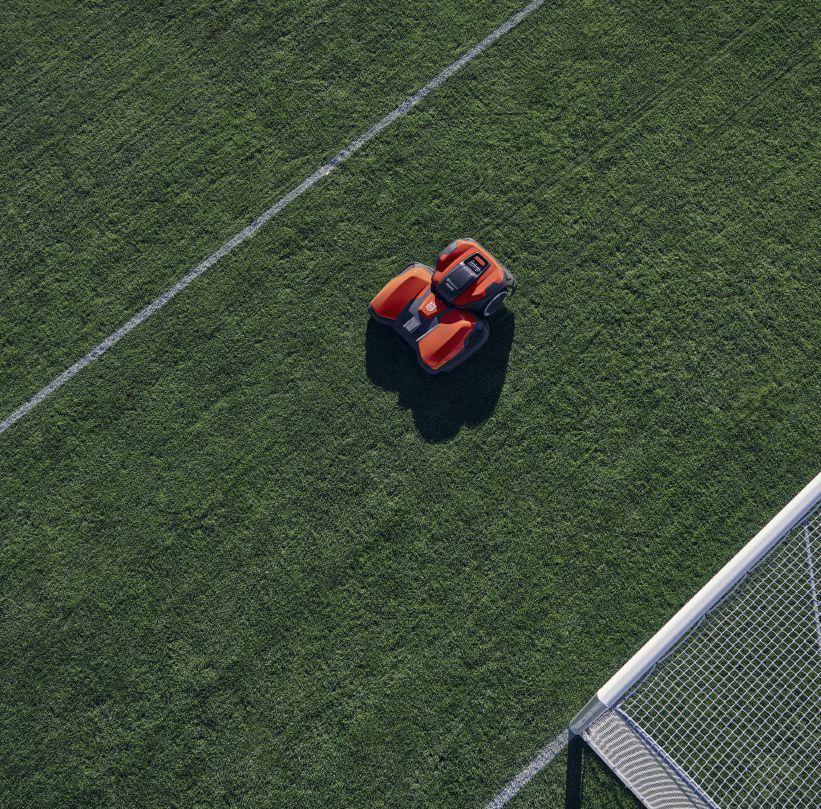

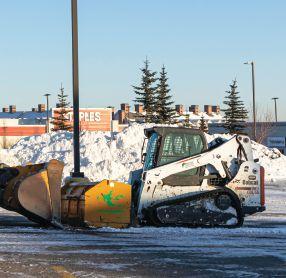

From the editor
By Mike Jiggens
Robotics: It’s not science fiction
If someone suggested 25 years ago that, one day in the not-too-distant future, unmanned robotic mowers would be capable of cutting golf course fairways, sports fields and other large green spaces, that person would be accused of watching too many science fiction movies.
What may have been science fiction then, however, is science fact today.
Although autonomous mowers have been commonplace in the industry the past half-decade, they have largely been smaller, randomly moving units that nibble away at leaf blades while traveling inside of a wired-in perimeter.
Robotic mowing has come a long way in a relatively short period of time.
Several exhibitors at the recent Equip Exposition (formerly GIE+EXPO) in Louisville, Ky. showcased the latest in robotic mowing, demonstrating how – among other things – autonomous mowers can mow without the need for perimeter wiring, can cut in pre-set patterns and can mow without fear of entering and damaging “keep-out” areas.
Some of these mowers require an individual to be seated on the machine to establish a perimeter boundary before he hops off and lets the mower finish the job unmanned. This allows the operator to do other
work such as trimming or blowing. In essence, the work of two or three people is being done by one individual.
Such technology also allows fairways or fields to be cut after hours when they’ve been vacated by users.
Manufacturers of these robotic mowers say they address a key concern that has challenged the industry during the COVID era – the shortage of available labour. The machines don’t call in sick and are drama-free. In time, they will pay for themselves as employee wages are reeled in.
It’s not just robotics that have revolutionized the industry. The movement toward battery power has picked up steam in recent years, and batteries are requiring less and less time to recharge. They are also capable of producing the power and run time operators want.
The machines don’t call
in sick and are drama-free
Advances in technology have turf care professionals thinking twice about their dependency on gasoline to power their equipment.
The motto of one of Equip Exposition’s exhibiting manufacturers was “the death of gas.” The company demonstrated at its booth just how quickly a near-drained battery

could be recharged and ready to be put back to work. The days of overnight recharging are seemingly over.
Long-established companies whose traditional gasoline-powered equipment have been top sellers for decades aren’t abandoning gas, but realize electrification and autonomy are the roads to the future and are venturing into that direction.
They say a demand for certain gas-powered products will continue to exist for the next little while. Chain saws, for example, need the power of gas to cut through large-diameter trees, they noted, adding battery-powered saws wouldn’t have been as effective during post-Hurricane Fiona cleanup work.
But, they acknowledged, the percentage of landscapers using at least some battery-powered tools has increased considerably over the past five years. Odds are another spike will come over the next five years.
The industry has been pressured into reducing its noise and emissions levels in recent years, and manufacturers have been challenged to find ways for battery power to address both issues while at the same time providing the power output and run time professionals need to do the job.
Battery power has succeeded with the former. It’s now catching up with or surpassing the latter in some areas.
Turf maintenance will never be the same.
www.turfandrec.com
Reader Service
Print and digital subscription inquiries or changes, please contact Angelita Potal, Customer Service Tel: (416) 510-5113 apotal@annexbusinessmedia.com
Mail: 111 Gordon Baker Rd., Suite 400 Toronto, ON M2H 3R1
Editor Mike Jiggens mjiggens@annexbusinessmedia.com
Advertising Manager Rebecca Lewis 519-400-0322 rlewis@annexbusinessmedia.com
Account Coordinator Trish Ramsay 416-510-6760 tramsay@annexbusinessmedia.com
Audience Development Manager Anita Madden Tel: (416) 510-5183 amadden@annexbusinessmedia.com
Group Publisher Anne Beswick 416-410-5248 abeswick@annexbusinessmedia.com
COO Scott Jamieson sjamieson@annexbusinessmedia.com
Printed in Canada ISSN 1186-0170
PUBLICATION MAIL AGREEMENT #40065710
SUBSCRIPTION RATES
Published 7 times a year – Jan/Feb, March, Apr/May, June/July, Aug/Sept, October, Nov/Dec Canada – 1 year $35.00; 2 year $45.00 3 years $55.50 (plus applicable taxes HST 86717 2652 RT0001
Occasionally, Turf and Recreation will mail information on behalf of industry related groups whose products and services we believe may be of interest to you. If you prefer not to receive this information, please contact our circulation department in any of the four ways listed above.
Annex Privacy Office privacy@annexbusinessmedia.com Tel: 800.668.2374
No part of the editorial content of this publication may be reprinted without the publisher’s written permission © 2022 Annex Business Media. All rights reserved. Opinions expressed in this magazine are not necessarily those of the editor or the publisher. No liability is assumed for errors or omissions.
All advertising is subject to the publisher’s approval. Such approval does not imply any endorsement of the products or services advertised. Publisher reserves the right to refuse advertising that does not meet the standards of the publication.




Husqvarna
Opposition growing over new golf course proposed in N.S.
Opposition is growing to a golf course construction proposal on Cape Breton Island in Nova Scotia.
More than 12,000 people have signed their names to an online petition aimed to protect a parcel of land from development at West Mabou Beach Provincial Park – an area deemed ecologically sensitive. Cabot Cape Breton wishes to build an 18-hole golf course at the site.
NFL’s Panthers want owner to discard artificial turf field
Several players with the NFL’s Carolina Panthers are pressuring team owner David Tepper to replace Bank of America Stadium’s artificial playing surface with natural turfgrass. Linebacker Shaq Thompson said it may take the entire team to quit going to practice until a natural surface is realized.
The Panthers say the artificial surface is a leading contributor to injuries.
Closed snow storage yards frustrates Edmonton contractor
An Edmonton snow and ice contractor is frustrated that three of the city’s four snow storage yards are closed.
HHS Contracting’s Will Horner said it has forced him to unload snow removed from commercial properties at a storage yard 20 kilometres away from Edmonton’s core.
Long lineups at the yard have caused delays for his crews and have increased costs.


12,000: the number of names signed to a petition

Equip Exposition sets record,
topping 25,000 attendees
A new attendance record was set Oct. 19-21 at the renamed Equip Exposition in Louisville, KY.
Formerly known as GIE+EXPO, the event attracted more than 25,000 attendees and registrants. All indoor and outdoor exhibit space was sold out for both Equip Exposition and Hardscape North America, which co-locates with Equip Expo. The event is North America’s largest trade show and conference for the professional landscaping industry.
coming from Guam, New Zealand and Australia.
Among the businesses that partnered for the conference and show were the Pool & Hot Tub Association, the Association of Outdoor Lighting Professionals, the Equipment and Engine Training Council, The Irrigation Association, the Professional Grounds Management Society, Davey Tree Expert Co. and the Women’s Tree Climbing Workshop.
20 km distance to the nearest available storage yard
“The trade show remains the industry’s family reunion,” Kris Kiser, president and CEO of the Equip Exposition and the Outdoor Power Equipment Institute (OPEI), which owns the trade show, said. “This year we shook up the programming a bit and introduced lots of new ideas.”
Expo attendees hailed from all 50 U.S. states and 49 countries, including Canada, with the furthest travelling attendees
More than 4,000 people turned out at the first-ever Welcome Reception at Louisville Slugger Field. Nearly 250 braved the cold morning at the inaugural Mulligan’s 5K Fun Run & Walk over the Big Four Pedestrian Bridge. The benefit run and walk, sponsored by Ariens, raised funds for the Kentucky Humane Society.
Next year’s show returns to the same venue Oct. 18-20.
Visit www.equipexposition.com.







NEVERSTOPª Services and Support. Keep Mowing.

NEVERSTOP™ Services and Support means business for the landscape industry. Start with Customized Financing, with leasing and seasonal payment programs created for landscape professionals. Keep your John Deere equipment running strong with Parts NOW. And sign on for Priority Loaners, our exclusive commercial loaner program that virtually eliminates downtime. Visit your local John Deere commercial dealer to find out how NEVERSTOP keeps landscape professionals like you in the green. Keep mowing.
JohnDeere.ca/NEVERSTOP



Innovations abound at Equip Expo
Huge breakthroughs in autonomous and battery power showcased at landscaping event.
By Mike Jiggens
Autonomous. Robotics. Battery. Electrified. These are the new buzz words being heard today in the landscaping, sports turf and even golf industries. Manufacturers of traditional gasoline-powered mowing and landscaping equipment have almost universally tapped into the escalating technology behind robotic and battery-powered equipment, while customers have embraced the ability to operate tools and machinery that deliver similar or higher output and run time yet are significantly more environmentally friendlier and require less labour.
Exhibitors at October’s Equip Exposition (formerly GIE+EXPO) in Louisville, Ky. showcased their latest products for the landscaping industry, placing an emphasis on their electrified and autonomous offerings.
One company – Kress – which has been manufacturing electric tools in Europe since the mid-1960s, recently touched
down in North America as part of the Positec Group. Kress’ mantra is “The death of gas.”
David Boyce, Kress’ director of field sales operations in Canada, noted the company’s batteries are at the heart of its ability to deliver everything a landscape professional needs at a job site.
“We’re getting clean, quiet power, longevity and run time, zero downtime, and they continue to remain consistent across their usage,” he said of Kress’ proprietary battery technology. “Our factories were able to create some innovative, revolutionary technology in collaboration with a Canadian university. Over the course of multiple years, we’ve been able to develop something that is far more sustainable in terms of lithium-ion and the chemical composition makeup of that battery.”
Despite a shift in recent years toward battery-powered equipment, gasoline-powered products have continued to retain a strong presence in the industry. Proponents
of gas-powered equipment argue that batteries are expensive and take too long to charge. Commercial users not eager to embrace battery technology also suggest that multiple batteries are required to power a single tool and that they don’t hold a charge long enough, which contributes to increased downtime.
Kress officials say their battery technology resolves these concerns.
“The Kress battery charges to 80 per cent capacity in only five minutes, provides 10 times more recharges than current lithium-ion batteries and produces the power and performance that meets or exceeds that of comparable combustion gas engines,” Positec Group CEO Don Gao stated in a news release.
The charging duration was demonstrated in real time at Equip Exposition. A stopwatch was used to clock the time it took to fully recharge a battery that was down to its last 14 per cent of charge. Kress’ eightminute commercial Cybersystem battery
A landscaper tries a Kress trimmer at Equip Exposition’s outdoor demonstration area in Louisville, Ky. The battery recharges in minutes, eliminating expensive downtime.
platform features both 4Ah and 11Ah battery packs with the ability to recharge each 60volt battery pack to 100 per cent charge in only eight minutes or 80 per cent charge in five minutes.
Gao said each 60-volt Cyberpack battery can produce up to twice the power output of standard lithium-ion batteries, meeting or exceeding the same performance as comparable commercial gas-powered tools but with less noise and zero emissions.
The system is capable of multiple daily recharges and consists of two batteries (4Ah and 11Ah Cyberpacks) and a Cybertank.
Run time is no longer a concern because the battery is always ready to go, Boyce said.
Equip Exposition represented Kress’ first official introduction to the North American market.
“This has enabled us to open our doors, pull back the curtain and allow the general public and the North American marketplace to come evaluate and assess who we are and
what they think of Kress,” Boyce said.
The company is planning its Canadian launch at January’s Landscape Congress trade show and conference in Toronto.
ROBOTIC MOWING
Kress and several other companies that exhibited at Equip Exposition are also vested in robotic mowing. Kress introduced its RTKn (real-time kinematic to the power of network) robotic mower which can operate within a given area without the need for perimeter wiring.
Like the Kress robotic mower, Husqvarna’s Ceora doesn’t require perimeter wiring and can mow large areas in parallel lines as if it was human-driven.
Lauren Ulrey, vice-president and general manager of Husqvarna Group’s robotics, said autonomous mowers not only address such concerns as sustainability, emissions and noise, but the labour shortage the professional turfgrass maintenance industry is
experiencing. One person can set the robotic mower in motion and simultaneously tend to other duties at a job site.
“It’s like a workplace multiplier,” she said. Systematic robotic mowers are more efficient than autonomous mowers that cut in a random pattern, Ulrey said, adding it’s the direction into which commercial robotic mowers are currently heading. Sports fields and other larger properties are where systematic mowers excel. They can cut in straight lines or chosen patterns.
Randomized autonomous mowers that rely upon perimeter wiring are still ideal for residential lawns, she said, noting perimeter wiring may be recommended on properties where a clear line of sight to satellites isn’t always realized. If a job site is in a heavily wooded area or if it’s surrounded by large buildings, wiring will ensure a consistent connecting signal.
Ulrey said Canada has “blown the doors


Lift 5,000 lbs., in tight spaces, all day long. You know the feeling. We just put it into words Crushery. Knowing you can handle any job that comes your way. And then some. At the controls of New Holland construction equipment, power takes on a new meaning. Step into a skid steer, compact track loader, loader backhoe, compact excavator and more—and go beyond performance.

off” robotic mowing and has been a significant growth area for Husqvarna.
Wisconsin-based RC Mowers introduced its Autonomous Mowing Robot at Equip Exposition, suggesting the machine enables one person to do the work of three. Unlike smaller robotic mowers, the Autonomous Mowing Robot operates like a zero-turn with the operator physically in the driver’s seat to establish a perimeter. Once that’s done, he identifies “keepout” areas to prevent the mower from entering water and other sensitive landscape features.
From there, the operator can enable autonomy mode and allow the mower to cut unmanned while he engages in other work. Two or three mowers can simultaneously cut a large-acreage site within pre-set perimeters.
Attendees at Equip Exposition were told the Autonomous Mowing Robot doesn’t take breaks, passes all drug tests and is drama-free yet cuts with precision.
California-based Graze’s Beta autonomous mower offers versatility beyond that of simply mowing. Equipped with a 60inch mowing deck that can cut in pre-set patterns, the unit can also be used to aerate, fertilize, pick up golf balls on driving ranges and put down de-icing agents in the winter.
Company CEO John Vlay described the machine as “the Swiss army knife” of landscaping and lawn care because of the various attachments it can utilize.
A front-end mowing deck, aerator or hopper can be fitted to the autonomous unit which will function without the need for perimeter wiring. Vlay said wiring is both expensive and can easily be broken.
The rotary deck can easily be switched out with a reel blade deck for finer mowing such as golf course fairways. Vlay said the golf course market sets up well for the Graze autonomous mower because fairways and roughs can be cut during the evening hours under limited lighting conditions without inconveniencing golfers.
“Golf is perfect for us, especially the fairways, because they’re mowing them three times a week,” he said.
Virtually the only maintenance the autonomous mower requires is blade sharp-

ening, Vlay added.
Because the mowing deck can be moved upward, three units can be stacked inside a standard trailer, allowing one person to do the job of three people in a single day.
THE TREND TOWARD ELECTRIFICATION
Briggs & Stratton’s Steve Andrews said when he became CEO of the engine maker two years ago, one of the company’s first objectives was “to lean into the electrification trend.” Internal combustion engines will remain an important part of the business for years to come, he noted, “but we know what’s happening with electrification, and new products are really the lifeblood of Briggs & Stratton going forward.”
Ferris, Simplicity and Billy Goat – among the Briggs & Stratton family of companies – have been trending in the direction of electrification.
“There is a wide variety of needs from all these OEMs (original equipment manufacturers),” Nick Moore, director of electrification sales at Briggs & Stratton, said. “Our goal is to make it as easy as possible for any of them to get into the market to reach what the market needs to get greener economies and greener job sites.”
He said one of things the company is striving to achieve is not having to redesign pieces of equipment to mate with their batteries. Moore added the goal is to minimize battery charge time and allow commercial mowers to work all day long.
Stihl CEO Terry Horan said although the company has been North America’s top seller of gasoline-powered equipment the
past 13 years, it acknowledges the market is changing and Stihl is adapting accordingly to expand its battery-operated line of landscaping tools.
Battery power continues to evolve each year, he said, noting Stihl’s battery-powered chain saws have especially come a long way.
Carlos Haddad, vice-president and general manager of Husqvarna’s North American professional business unit, said the movement toward battery-powered equipment has increased significantly over the past five years. In 2017, less than five per cent of landscapers were operating at least one battery-type product. The number of users has increased to between 30 and 40 per cent today.
Gasoline-powered equipment will eventually “die” in the landscaping industry, he said, but he predicted it will be “a slow death.”
One gasoline-powered product whose shelf life is expected to continue for years to come is the chain saw. Haddad said the power of gas is still needed to cut through large-diameter trees.
Nevertheless, battery power will account for upwards of 70 per cent of units sold within the next seven years, he predicted, especially among such products as blowers.
The evolution of battery power has most notably been seen in run time, he said. Only five years ago, an operator might get 10 to 15 minutes of run time on a battery charge. Today, with a couple of extra batteries, he’ll be self-sufficient for an entire day.
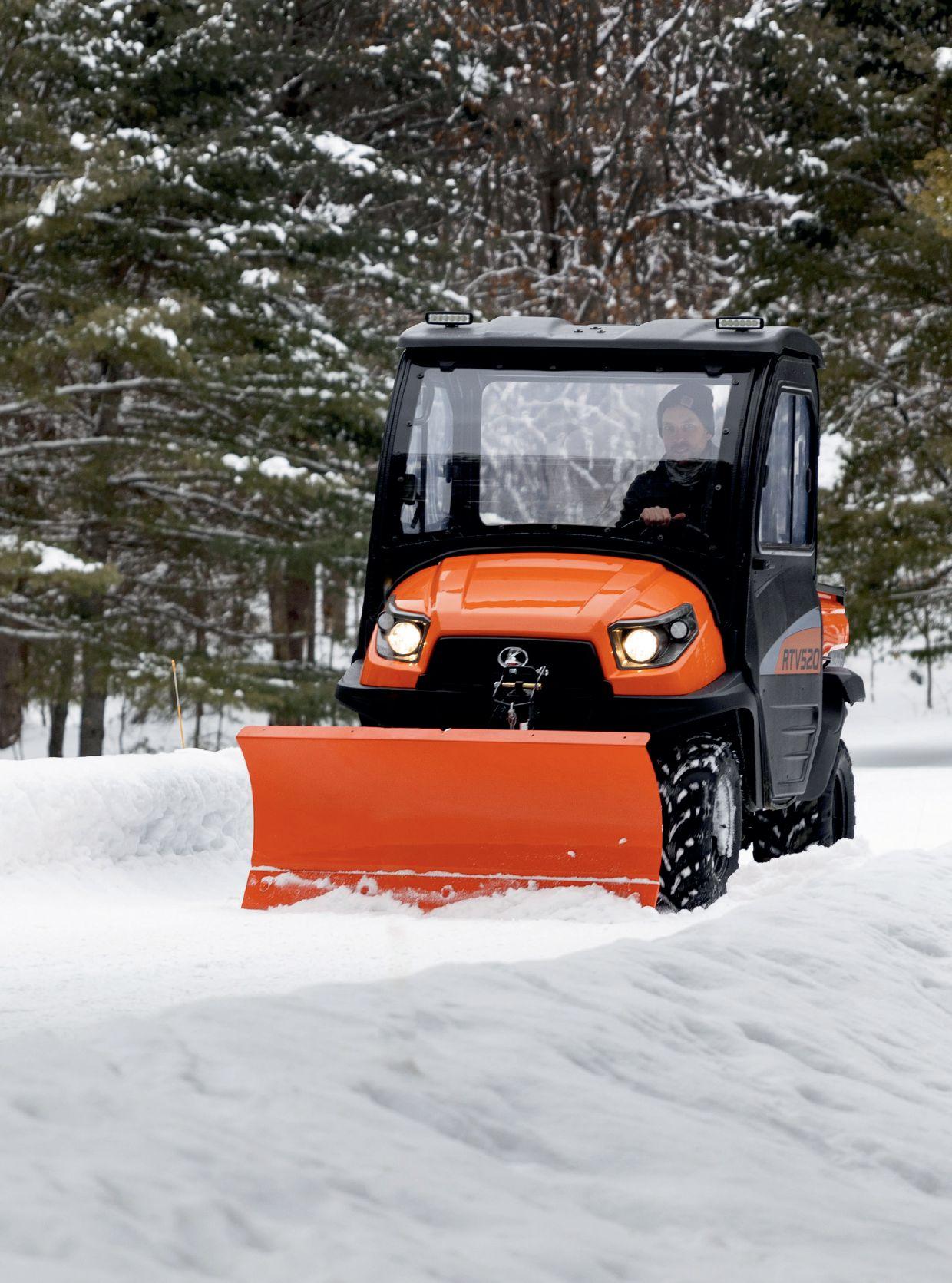
Husqvarna’s robotic Ceora mower cuts a sports field with precision striping.
PHOTO: HUSQVARNA


SNOW WON’T SLOW YOU DOWN.
Heat up your winter in the Kubota RTV520’s optional heated cab as you take on snow with a durable and powerful diesel engine. Plow, sweep and blow through the season, even in tight spaces, as you outlast challenging weather and terrain.
KEGS ends GLAGS ’ streak at Honey Cup
10-8 match play victory is KEGS’ first win since 2018. By
TMike Jiggens
he Kent-Essex Greenkeepers’ Society (KEGS) returned to the winner’s circle for the first time since 2018 following its 10-8 victory in October over rival Greater London Association of Golf Superintendents (GLAGS) in their annual golf match play competition.
It marked KEGS’ first win since the event’s rechristening to the Paul Brown Honey Cup Fall Classic. The contest between the neighbouring golf superintendents’ associations is sponsored by Envu (formerly Bayer Environmental Science). The event began in 2009 when it was previously sponsored by Syngenta. Overall, GLAGS leads the series 8-6.
Played at the Maple City Country Club in Chatham, Ont., the contest featured six individual match play sets worth three points apiece. Twosomes played against one another in six holes each of best ball, alternating shots and scramble play with each segment worth one point.
KEGS dominated three of the six sets, surrendering only one of a possible nine points to GLAGS.
Host superintendent for the Honey Cup was Greg Brown, son of the late Paul Brown, for whom the competition is named. The elder Brown died in 2017 after an on-course accident at the Sarnia Golf & Curling Club, where he had been its longtime superintendent. The reference to honey in the event’s title comes from the passion he had for beekeeping and honey production.

Ryan Beauchamp, Envu’s territory sales manager for golf, founded the match play competition in 2009. It was played that inaugural year at the St. Thomas Golf & Country Club where he had worked several years as its superintendent.
“As of this week, we are called Envu,” Beauchamp told the collective group of golfers during the post-round dinner. “We’re no longer Bayer. We’re a company moving forward. There are a lot of good things going on.”
Earlier in October, Bayer completed the sale of its Environmental Science Professional business to the international private equity firm Cinven, after both companies
had entered into a corresponding agreement in March. The divested business is now operating as an independent company renamed Envu, which gets its name from the terms “environment” and “vision.”
Envu was well represented at the Honey Cup with golf segment manager Tim Steen and green solutions specialist/pathologist Dr. Travis Russell joining Beauchamp among the golfers.
During dinner, each of the participating superintendents was given an opportunity to speak and share information about course upgrades and other happenings at their respective clubs.
Joel Henderson, superintendent at the
Gregg Menard, captain of the KEGS team, proudly wears the Paul Brown Honey Cup championship belt handed over by GLAGS captain Jamie Spencer.
Sarnia Golf & Curling Club, noted renovation work that had been paused during COVID got underway this year with improvements made to bunkers, tees, sod surrounds and a couple of par four complexes.
Joel Johnston, completing his first year as superintendent at London’s West Haven Golf & Country Club, said the club’s irrigation system is being overhauled, enabling him to better control its water.
Doug Wilson, superintendent at the Black Horse Golf Club in Kincardine, said golf’s success during the COVID pandemic allowed the club to upgrade its existing equipment.
Jim Gammage, superintendent at the Ridgetown Golf Club, said some new forward tees are being created at the golf course to accommodate the growing number of women who have taken up the game.
Steve Hatch, superintendent at Windsor’s Ambassador Golf Club, said drought
was a concern this season with marginally more than an inch of rain falling as of late May.
Chris Andrejicka, superintendent at the Essex Golf & Country Club in Windsor, said a new 23-acre driving range is ready to open in the spring. Plans are to convert the former range site into a short six-hole course.
The Paul Brown Honey Cup Classic will be played next year in London at the Sunningdale Golf Club. Andrejicka said he plans to push for Essex to be host venue for the 2024 event.
COMPETITION RESULTS
Match 1: Scott Gardner (Echo Valley Golf Club) & Jamie Spencer (Echo Valley Golf Club) of GLAGS defeated Greg Brown (Maple City Golf Club) & Chris Andrejicka (Essex Golf & Country Club) of KEGS 2.5-.5.
Match 2: Tim Hornick (Arkona Fairways Golf Club) & Mark Gibson (Green Hills Golf Club) of GLAGS defeated Steve Hatch
(Ambassador Golf Club) & Tim Steen (Envu) of KEGS 2.5-.5.
Match 3: Joel Henderson (Sarnia Golf & Curling Club) & Ryan Beauchamp (Envu) of KEGS defeated Kelly Dustin (Caradoc Sands Golf Club) & Sandy Fifield (St. Marys Golf & Country Club) of GLAGS 2.5-.5.
Match 4: Gregg Menard (Wildwood Golf & RV Resort) & Dan Friesen (Orchard View Golf Club) of KEGS defeated Dan Lavis (Tarandowah Golfers Club) & Doug Wilson (Black Horse Golf Club) of GLAGS 2.5-.5.
Match 5: Jim Gammage (Ridgetown Golf & Curling Club) & Matt Erickson (Pointe West Golf Club) of KEGS defeated Mike Jiggens (Turf & Rec) & Dr. Travis Russell (Envu) of GLAGS 3-0.
Match 6: Joel Johnston (West Haven Golf Club) & Fred Schmoelzl (Blue Water Golf Club) of GLAGS defeated Derek Brown (Talbot Trail Golf Club) & Josh Mallot (Belleview Golf Club) of KEGS 2-1.
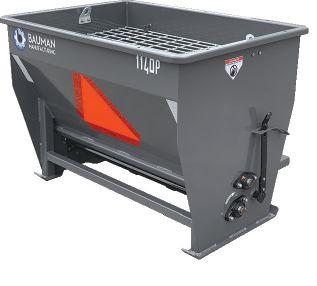



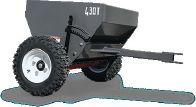
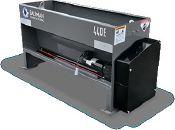




When to say ‘ no ’ to a customer
Sometimes landscapers must ‘fire’ a customer if the fit isn’t right. By Mike Jiggens
Landscaping companies, like other businesses, offer professional services to commercial and residential customers in exchange for payment. Customers will sometimes cancel the services of landscape contractors for one reason or another, but it’s not often that contractors will “fire” their customers. When it happens, it’s usually for a good reason and one which benefits the landscaper.
A panel of industry professionals shared their reasons for saying “no” to existing or would-be customers during the winter’s virtually delivered Landscape Congress conference.
“Why would I say no to potential work?” moderator Haig Seferian, founder of Burlington-based Seferian Design Group, asked rhetorically when introducing the session. “We’re all looking for work, and this is one of the reasons we’re in business.”
He said he learned long ago that not all projects or clients are good matches for
contractors. One of his long-time customers was always tardy in making payments for completed work, sometimes taking up to a year to pay his bills after numerous reminder telephone calls.
“Then I made the decision to end our relationship, to which he thought I was joking,” Seferian said. “It was a tough pill to swallow.”
He said that although his decision closed the door on that business relationship, it opened new ones to work with customers who shared the same philosophies.
Beth Edney, owner of Toronto-based Designs by the Yard, said there must be a good fit between the customer and the business, especially in the current era of labour shortages and supply-and-demand issues.
“Some of the things I think about when I pick a client is, do they fit my scope of work?” she said. “If it’s not something I’m interested in doing, I’m not going to take that work on.”
Edney, who founded her company 28 years ago, recently won a bid on “a really neat project,” but later found the scope of the work contained elements that didn’t fit into her timetable.
“Look at the projects and see if they’re really something you’re interested in doing.”
Clients can also be filtered out based on where the contractor wishes to work, yet her foremost consideration is for the customer’s values.
“I want clients that reflect me,” she said.
Edney parted ways with a customer a few years ago because the client didn’t appreciate the same things in life she did, and they didn’t reflect the same values.
“They were nickel and diming me for everything, yet they could afford to have four nannies.”
Edney said there are warning signs to be aware of when dealing with clients, especially when they start recalling bad experiences they’ve had with other contractors.
Landscape contractors may be faced with having to sever ties with customers for several reasons, but in the end it’s best for the company.

















LANDSCAPING
“That’s a really great alert for me,” she said. “They’ve had problems already with somebody else. I’m not any better than anybody else. I’m probably going to be in the same situation with them if they’ve got an acrimonious situation already with someone else in the industry. Chances are I’m going to go down that same road.”
Trust your gut
Contractors must trust their gut, she said, adding there’s a tendency to set aside their true gut feelings when first meeting a customer.
“That gut has served me every time. When I should have gone with my gut reaction with that client and something wasn’t sitting right, I should have trusted my gut because it was bang on.”
When a contractor is inundated with work, he feels overwhelmed, Edney said,

Market Leader in Turf Variety Development

Professional Turf I Sports Turf Native Seed
Gavin Carnegie - Manager Professional Turf gcarnegie@dlfpickseed.com I 705.313.3563
Amanda Hoewing - Sales Professional Turf ahoewing@dlfpickseed.com I 289.924.1122
Rod Speake - Sales Professional Turf rspeake@dlfpickseed.com I 226.808.9116
VIEW PRODUCTS dlfpickseed.com 705.878.9240 info@dlfpickseed.com

‘They were nickel and diming me for everything’
adding a balanced schedule provides peace and clarity.
“We can let some of that go and have room and opening for other projects. When you give that room, it opens the door so that you can do projects that you’re passionate about and you love to do.”
Frank Ferragine, dubbed Canada’s garden expert and a regular on CityTV’s <i>Breakfast Television</i>, said he’s often pulled in multiple directions with his work which includes operating Bradford Greenhouses Garden Gallery, a family-owned business. Time devoted to family, including his two sons, is important to him.
“I have to make sure that with my time, I’m using it in the right way,” Ferragine, who also goes by the media moniker Frankie Flowers, said.
Projects and jobs will come along many times that seem exciting and worthwhile, but if they don’t fit the criteria of the contractor, he ends up frustrated, he said, “and sometimes you’ll find the best ‘no’ will lead to a better ‘yes.’”
Ferragine said he learned to say no after taking a retail course that provided instruction in ways to “fire” a client.
“There is a time when you have to fire a customer because there will be a time that no matter what you do, there’s no way you’ll be able to satisfy that customer, there’s no way you can make a profit out of it, and you won’t enjoy what you’re doing.”
By saying no, the contractor is better focused and can stay on budget and on time, he said, adding that deciding on the type of customer with whom he wishes to work will provide the framework of when to say no.
“If you say yes all the time, you’re going to have a lot of problems overall.”
Jim Mosher, owner of Landscape Plus
in Etobicoke, said saying no doesn’t come easy for him.
“We’re wired to please,” he said, “and I needed to create a system that tricked me into keeping that ‘no’ in front of my face all the time so that I could be properly aligned and have the opportunity to make a profit.”
Mosher said the key words to help him achieve that goal are “responsibility, clarity and discipline.”
Landscapers are only human, he said, and sometimes ego and emotion can come to the forefront. The qualifying system he has devised for relationships with customers “is designed to protect me from myself.”
Criteria for new customers
Mosher said he has three criteria for taking on new clients: they must be a budget fit, there must be an intellectual and artistic challenge, and they must be in ethical alignment.
Being a budget fit is a ground-up and deep understanding of the numbers required to make the job float and provide a sufficient margin for the job to be profitable.
“There’s no wiggle room for this. Our sustainability and our future as a company depend on this.”
Landscape Plus has been operating for 38 years, and Mosher said the company’s toolbox of skill sets is deep, adding the flipside side of that makes it difficult to challenge workers. If something comes up that isn’t in line with what the company is after, he said he’ll raise his hand.
The need to be ethically aligned has its obstacles. Mosher said there are some products available for use in Ontario that he’d prefer not to use for ethical reasons. When interacting for the first time with a prospective customer, he said he wants to engage in a 15-minute telephone con-
versation before deciding if a face-toface, on-site meeting is warranted. This helps to determine if the customer is simply looking for free consulting.
Budget discussions can be delicate during the initial phone conversation, he said.
“Using the word ‘no’ isn’t cocky or arrogant,” Mosher said. “It’s simply a tool to be used respectfully to make sure we’re fully aligned with new clients and create the possibility of being profitable.”
The three panelists were asked if raising prices might be a more practical way of dealing with unwanted customers than to fire them.
Ferragine said raising prices can be interpreted as gouging, and that could trigger other effects.
“Honesty is the best policy,” he said. “Letting them know they aren’t the right fit or their timelines aren’t compatible is a better way than randomly raising prices, as you open yourself up to other issues.”
Edney said she has presented higher quotes to customers who “push my buttons,” yet she’ll continue to take on such projects if the customer accepts the price hikes. She said she has customers whose working relationships she enjoys while there are others who are acrimonious, and higher fees are apt to be built into their quotes.
Mosher said he doesn’t like to juggle his rates for customers who aren’t the right fit. Telling them so and severing their relationship is the best way to handle such matters, he said.
“As much as it hurts and you don’t want to do it, I think honesty’s the best policy,” Seferian suggested, adding there may not be any amount of money that would allow him to continue to work with an unwanted customer. He would otherwise “begrudge” working with that customer every day.
“I’d rather be known as the guy who’s too expensive for most than the guy who works for everybody, and then there’s problems,” he added.
Billy Goat ® Hurricane™ P2000 Blower
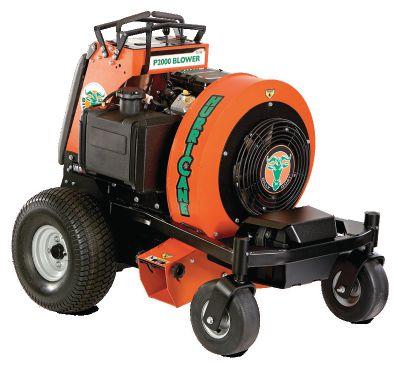


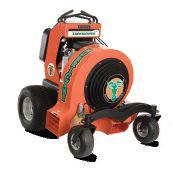




Double down on leaf and debris cleanup with a Billy Goat Hurricane!

Course design and its upkeep
How golf course architects can leave a manageable product for superintendents to maintain.
By Mike Jiggens
Golf course design and golf course management must be linked together to create a more sustainable product, one of Canada’s foremost architects says. Graham Cooke, founder of Quebec-based Northern Golf Design, notes the designer and superintendent must be on the same wavelength in terms of how a course is built, shaped, drained, watered, grassed and maintained.
“Course management will return a more desirable and manageable product,” Cooke said last winter while speaking at the virtually delivered Ontario Turfgrass Symposium. “When the architect has completed the course, those left with the responsibility of course management have a product that meets their expectations.”
When designing public golf courses, features that bring excitement are needed, Cooke added.
“You also want people to get around the course in a fairly decent amount of time.”
A public course he designed in New Brunswick features a pot bunker on one hole, but it’s one most golfers won’t find. However, it adds excitement, drama and creates a talking point, he said.
When he first began his design of Willow Valley Golf Course near Hamilton, Ont., the property was mainly flat at the outset. To add interest to the layout, he incorporated waste areas, ponds and lakes that helped set it apart from other neighbouring courses.
“When a golf course is too quiet, it doesn’t have the same memorability and doesn’t have the same drama.”
A golf course design should never begin until the architect understands the land, Cooke said. Before designing the Lakes Golf Course on Cape Breton Island, he said he walked the land about 10 times before feeling comfortable about the job. The property included streams, rocks and other natural features, and he considered it important the golf course fit into the property.
“Don’t start your design until you understand the land very well.”
Creating excitement
Many golf courses wish to be upgraded to create more excitement for golfers, and it’s a competitive edge several require these days, Cooke added.
Designers must be flexible, he said, and not stick with one set design. They must also be aware of the cost of golf course maintenance. He said his goal is to make golf courses playable and enjoyable and not worry about making them long enough “to challenge the (Bryson) DeChambeaus” of the world.
“You’re out there to sell. You need people playing these golf courses. You have to put some eye candy in. You’ve got to make sure it has good flow, and you’ve got to make sure it’s playable and maintainable.”
When the golf course is delivered by the architect and is put in the hands of the superintendent, it must allow him and his maintenance team not to be besieged by
Bunkers featuring rough fescue along their edges are becoming more popular and have been inspired by Scottish golf.
wear areas. Cooke said the architect must sometimes put his ego aside to allow the course to flow and be sustainable.
Inspired by Scotland
Much of his inspiration comes from Scottish golf. The Scottish bunker style, for example, is starting to catch on in North America. Cooke said he’s become a “fan” of fescue at the tops of bunkers, and it’s a feature that golfers are enjoying more today.
“We should all take a page out of Scotland,” he said, noting the Scottish want courses to play hard and fast and promote native grasses.
There is little front-end bunkering into Scottish greens, allowing golfers to hit approach shots with lesser clubs and watch the ball bounce onto the green.
“It’s a fun way to play golf. It takes a lot of good management.”
Incorporating front-end bunkers into a golf course design is the easiest way to make a course difficult, Cooke said.
“It immediately takes away all the opportunities for seniors, women and young people, unless you’re strong. The aerial game is lost. I don’t like golf courses that can only be played to a handicap by good players while everyone else struggles and can’t reach their handicap.”
Green speeds must also be kept in mind, Cooke said, noting that surfaces that register 12 or 13 on the Stimpmeter increase the amount of stress on the course. Faster greens are also detrimental to most golfers who are in the mid- to high-handicap range.
“It’s hard to read greens when they get really, really fast. It’s almost impossible to read them.”
Making compromises in the design of a golf course is often necessary, and such plans should be made in co-operation with the superintendent who will be taking over, Cooke said.
For example, greens designed to be more than 7,000 square feet in size or upwards of 9,000 square feet on each hole creates a challenge for the superintendent.
“I don’t think designers realize how
much cost and stress that puts on a manage ment program. I like a golf course that has small greens as well as some big greens, but they’re a reasonable size so they can be managed and keep costs in check.”
Asked how he would deal with a golf



Top dressing made easy. Screened compost & soil, sand, pelletized products, and more

Featured: ECO250


Solutions for all of your residential, commercial, & municipal clean up needs
Featured: Hurricane Z3000


Get the job done with the ultimate heavy- duty commercial stand- on lawn mower.
Agile, compact, productive, natural stripes and a beautiful cut. Mowers from residential to commercial.
Featured: T27i
Featured: Stander ZK

Stay connected with customers
Season-long communications must be maintained between snow contractors and property management firms. By Mike Jiggens
Solid communications are vital between a snow contractor and the property management company for which he works. A communications plan must be drawn up to cover the periods before, during and after the snow season, and, ideally, fees must be collected, and contracts signed before the first flake hits the ground.
Ryan Dempsey, managing partner with the East End Group, a snow removal company serving the tri-state area of New York, New Jersey and Connecticut, and Jeff Levy, vice-president of property management for DLC Management, a New York-based owner-operator of shopping centres, outlined the responsibilities of both parties during a virtually presented
webinar in the fall that was sponsored by the Snow and Ice Management Association (SIMA).
Snow removal is unlike other property services, Dempsey said, because it’s emergency based.
Levy concurred, adding snow events are dictated by Mother Nature.
“It’s a reactional business,” he said. “There’s little you can do to be prepared for it.”
What the snow contractor and property management group, however, can prepare for are the necessary agreements that outline the responsibilities of both parties so that priority and secondary arrangements are met, and all follow-up practices are accomplished to everyone’s satisfaction.
Dempsey said it’s a good idea to learn about any past hurdles involving the property management group when forming a new relationship or taking on new properties. Having that information available at the outset is vital, he added.
Requests for proposal (RFPs) should be accurate and provide the necessary information about a property, Levy said.
“Everything has to be shown on that RFP to get the job that you need and an accurate bid for the work to be done,” he added.
Once a contract is signed, it should show that both parties are on the same page regarding the scope of work and the expectations for the property, including what are considered priority and secondary matters.
Snow contractors should know the lay of the land of a parking lot and where such obstacles as light poles are located.
“And what are the follow-up practices when the event is done?” Dempsey said.
Levy added that once an agreement is in place, a walk-through of the property be conducted with the team of people who will be tasked with the snow removal service. They should know the layout of the property and where curbs and other obstacles are located so that everything can be marked.
“It’s important they know how the property flows,” he said.
A chain of command should be established, Dempsey said, emphasizing that it should be clear who’s giving direction from the property management company.
Directions from property management
Levy said the individual tenants at a shopping center should not be giving instructions to the snow and ice contractor. Instead, all direction should come from the property management company itself. Tenants who have opinions about how snow removal work should be done must go through the property management company to decide if any adjustments are to be made in time for the next snow event.
When the job is done, the right people from both the property management and snow removal companies must ensure invoices are paid, Dempsey said.
Levy noted an important consideration in pre-season communications is to ensure a future communications timetable is scheduled for both the in-season and post-season periods. All players must also be connected, he added, noting that if a property manager is unavailable during a snow event that someone else is ready to step in and provide timely information to shopping centre tenants.
Among the key considerations the snow contractor must understand are the operating hours of a property, Levy said. Fire lanes must always be maintained, the property must remain accessible, and certain areas of a parking lot must stay cleaned for employees who
work during the night.
An RFP must indicate the entirety of a property’s ins and outs to ensure accuracy in a quote and that the expected service is delivered. Such attention to detail helps to reduce the number of calls from unhappy
tenants.
If a storm is forecast, pre-storm communications should begin with the property management group 36 to 72 hours in advance. Dempsey said it provides ample heads-up time to alert the commercial

property that a weather event is brewing. Updates will then be provided every 24 to 12 hours along with the snow contractor’s service plan which includes all pre-treating measures and deployment method.
From the property manager’s perspective, being provided with weather notifications allows for any necessary schedule changes to be made to ensure everyone is ready, Levy said.
“The weather information that is available today is more accurate than it was five years ago and is more pointed at a direct location, making it so much easier to manage,” he said.
Having such information available allows Levy’s team to directly work with Dempsey’s crews and ensure people are in place to respond as needed.
Levy keeps an eye on multiple weather feeds along the east coast since DLC
Management looks after several properties in the region.
Preparing for abnormal possibilities is part of the contractor’s strategy, Dempsey said, adding he doesn’t like to be blindsided when it begins to snow during such infrequent events as office parties.
The period spanning mid-November –including U.S. Thanksgiving – to Christmas is critical for sales at properties Levy manages, and it’s important to have every parking spot available for customers.
“These stores do incredible amounts of business, and losing even one parking place can be difficult,” Levy said.
The earlier, the better
The earlier the property management company and contractor are aware a significant snow event is imminent, the sooner communications can begin, and
the earlier preparations can be executed, Dempsey said.
Once a storm is underway, the next line of communications must be established, Dempsey said.
“Is your pre-storm plan activated and is it going according to plan?” he said. “What is the procedure during the storm for any complaints or service issues?”
Levy said he has fielded calls from tenants who complain no one is ever there to clear snow following a storm. He added, however, it’s fun to answer such calls when they’re made after snow has been cleared.
“There’s no value to tenants crying wolf,” he said. “If they have a problem, we want them to call but we want them to make sure they have an issue before they call.”
Levy said tenants have been known to complain early in the morning that a
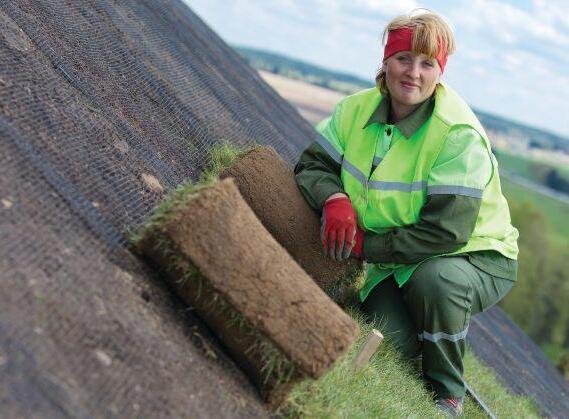
Turf & Rec will be paying tribute in 2023 to some of the outstanding women in the professional turfgrass industry, whether it’s the golf, landscaping, lawn care, sports turf or other sector.
parking lot hasn’t been salted when, in fact, ample salt has been put down. It’s just waiting for the sun to rise and provide a heat source before it starts working.
Communications made during a storm can be provided every couple of hours or what is deemed appropriate. Post-storm communications should cover such matters as the forecasted temperature for the next day and whether additional salt is required, any changes in procedure that might be altered and any improvements that are required.
Levy said as a landlord he must take an annual look at his tenant mixes to see if the property’s current snow plan is still
relevant. One of his company’s shopping centre properties in Buffalo will soon have a supermarket added which is expected to attract an extra 1,500 vehicles daily.
“That means parking will be at an even greater value, and the spaces that we have will be even more important.”
An expansion of that magnitude changes the property’s snow plan, he said.
Dempsey said post-storm communications include a review of everything that went right and ensuring those responsible are aptly rewarded. It’s also important to review anything that went wrong and determine where improvements are needed.
Damages are bound to happen when
‘Losing even one parking space can be difficult’

New! Bannerman Model B-IS-F145 Stone & Debris Burrier
Controls weed infestation in walking paths, warning tracks and baseball infields with the “One Pass” ground preparation for seeding or sod replacement in goal mouth areas.
Features include:
• Tractor PTO Driven - (30 to 45HP) recommended
• 28 Special Centra Rotating “Hoe” Blades Leveling
• Grader Blade on Screw Jacks
• Rear Adjustable “Net” Roller complete with Soil Scraper and Brush
• “Net” Roller can be offset to work close to fences, walls and curbs
• Working width 57”, Standard 3 Pt Hitch Cat # 1 & #2
removing snow, and such matters as hitting a car or backing into a light pole must be addressed immediately, he added.
Levy said there are issues associated with sidewalk snow removal that also need addressing, including ways to avoid such things as damaged turf, compromised light poles and “messed up” catch basins.
Repair costs aren’t always the responsibility of the contractor, he said, adding some of the blame might be the property management company’s or perhaps the costs can be split in half.
“It can be challenging, and sometimes these things slip around,” Levy said.
Dempsey said that during the off-season, improvements can be identified to make the contractor’s life easier.
“It’s a recipe for success when everyone is communicating properly,” he said.
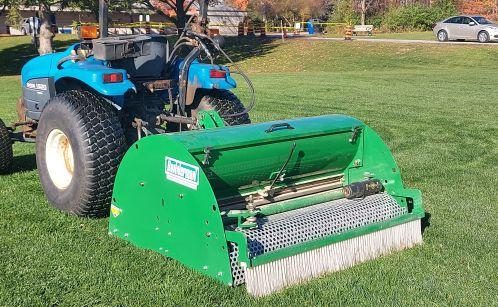
B-MSS-1400 Multi-Star Seeder
Unique angling of middle two rotors from 0-6 degrees to allow raking and agitation of surface to incorporate seeds or dressings more effectively. Accurate stainless-steel seed metering system.
Features include:
• Seeding Width of 55”
• Long Life “Star” Seeding Blades Interlock for Self Cleaning
• Hydraulic “ON/OFF” Seed Flow Control
• Rear Drag Brush
• 3 Point Hitch Cat #1 & #2

RESEARCH
A look at options in turf herbicides
Alternative herbicides: liquid, granular or something in between?
By Dr. Sara Stricker
Research by John Watson and Dr. Eric Lyons
Low-risk herbicides are commonly used on lawn height turfgrass to manage weeds, especially in regions affected by strict pesticide legislations. When a new product is developed, the manufacturer needs to determine the optimal rate to have the desired effect without over-applying, which can be damaging to the turf and not economical. Additionally, the development team will need to decide on how the product is formulated – is it a solid (also called granular), a liquid, or something else?
Liquid herbicides are fast-acting and generally have a lower salt content. However, they are usually more expensive than solid products. Solid products require a drop-spreader or broadcast-spreader and may have slow-release or delayed-action properties. Water soluble granule (WSG) products are shipped as a solid and are mixed with water by the user to be applied as a liquid. A downside to WSG is the need to keep the mixed product agitated to prevent it from settling out of suspension, but they can be less expensive than liquid products and easier to apply evenly than granular.
Fiesta is an alternative herbicide containing iron chelate that specifically targets broad-leaf weeds, including dandelion, black medic, and plantain. Iron (atomic symbol Fe on the periodic table) is an essential micronutrient for plant development and plays a key role in producing chlorophyll. When bound to a chelating agent, the iron is in a soluble form which can be dissolved in water. Chelated iron has been registered for management of broadleaf weeds.
Plants can be divided into two categories: grasses (monocots) and broadleaf plants (dicots). The leaves of broadleaf plants will have branching veins, whereas grasses have thin leaf blades with parallel veins. On a biochemical level, broadleaf plants are more adept at absorbing chelated iron, and the increased absorption can be used to their detriment. When products containing chelated iron are applied to turf, the iron will be quickly absorbed by broadleaf weeds and internal iron oxidation will cause necrosis and death. The turf will be largely unaffected, and in fact may exhibit a darker colour due to the

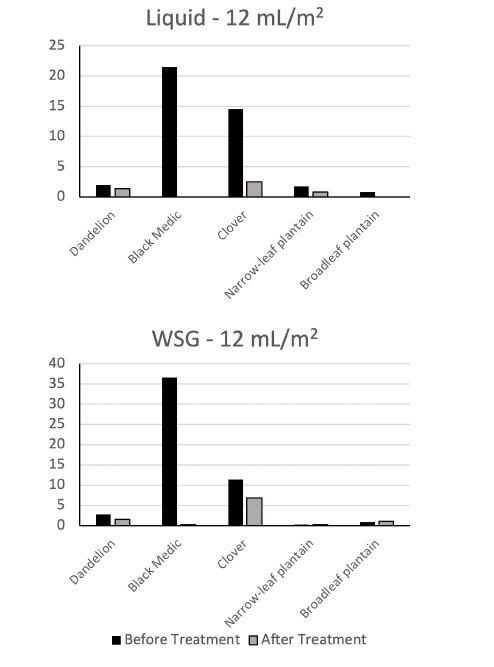
Figure 1. Before treatment (June 4) and end of study (July 19) weed coverage as percent values (%) determined by point quadrat.
Dr. Sara Stricker is communications and outreach co-ordinator at the Guelph Turfgrass Institute.

production of more chlorophyll.
We all know the adage “too much of a good thing,” and that applies in this situation as well. If too much iron is applied, even the turf will suffer, resulting in phytotoxicity (phyto = plant, toxicity = damage). The maximum safe rates of herbicides, especially when they are commercially available, should be determined to understand the potential consequences of misapplication. In a series of experiments at the Guelph Turfgrass Institute (GTI), various rates and formulations of the product Fiesta were tested on turf maintained at lawn and municipal sports field height (5-6 cm).
The current label rate for the liquid formulation of Fiesta recommends 4-16 mL product per m2, depending on the target weed. The granular and WSG formulations are not currently on the market.
In the first trial at the GTI, on a field of creeping fescue + perennial ryegrass + Kentucky bluegrass, the study tested the liquid, water soluble granular (WSG), and granular formulations of Fiesta. The liquid treatments were applied at a 12 mL product per m2. Fiesta WSG treatments were mixed at a rate of 12 mL product per m2. The granular plots were pre-wet with water to simulate dew prior to application, and then the pre-measured solid product was sprinkled on by hand (39.1 g per m2). Each formulation was applied twice, 18 days apart. Percent coverage of weed species was counted each week using a point-quadrat, and turf phytotoxicity was visually estimated on a 0-10 scale (0 = no damage, 10 = death of turf stand).
Overall, each formulation of Fiesta worked to suppress dandelion, black medic, and clover (Figure 1). It was difficult to assess the effect on narrow-leaf and broadleaf plantain due to low numbers in the plots.
For the liquid formulation, the highest amount of weed suppression occurred soon after treatment and the effect of the product decreased over time. For example, the average weed suppression was 73 per cent at seven days after the first application and fell to 49 per cent two weeks later. Seven days after the second application, the weed suppression was 91 per cent, which then dipped to 84 per cent at 21 days after that application. This pattern was also observed with the WSG formulation, although not as pronounced. The granular formulation seemingly had a delayed effect and exhibited peak performance (67 per cent weed suppression) two
weeks after the first application and one week after the second application (82 per cent suppression).
In general, the liquid and granular products provided the good weed control throughout the experiment and performed comparatively well to another commercially available alternative herbicide (4-chloroindole-3-acetic acid). At the rates tested in this experiment, there was little to no phytotoxicity detected.
All formulations and rates of the iron-based herbicide Fiesta significantly reduced black medic populations present in the plots, virtually eliminating it from all plots by end of study. Clover was also slightly reduced, and there were no other weed populations in the turf stand to evaluate.
The take-home messages from these trials are:
• Following the recommended rates for application of iron is important because over-dosing on iron can damage turf
• When applying, assure even application of the product
• Black medic, clover, and dandelion can be suppressed by an iron-based product when label recommendations for re-application are followed
• Liquid and WSG formulations provided similar weed control
21_0241_Turf_Rec_JAN_FEB_CN Mod: January 12, 2021 8:25 AM Print: 01/19/21 9:35:39 AM page 1 v7


SHIPPING SUPPLY SPECIALISTS
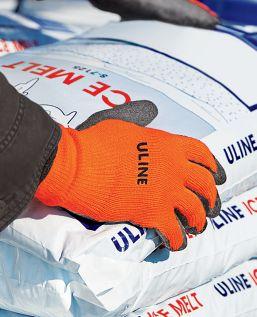




Fiesta trial at the GTI
A look ahead at 2023’s industry conferences, shows
Canada’s turfgrass industry is ready for a return to in-person conferences and trade shows in 2023 following two years of virtual experiences due to COVID-related lockdowns. Among the events set to return are Landscape Congress, the Canadian Golf Course Management Conference, the Western Canada Turfgrass Association Conference and Trade Show, the Ontario Turfgrass Symposium and the Ontario Golf Course Management Conference.
Landscape Congress
Landscape Congress, Canada’s
largest landscaping and horticulture trade show and conference, will be celebrating its 50th anniversary in 2023. The Landscape Ontario-sponsored event will be held Jan. 10-12 at the Toronto Congress Centre.
Several education sessions are being offered over the course of the three-day conference, covering such topics as distinguishing between good and bad fungi, advanced maintenance techniques, building powerful business relationships, selling and buying a landscaping business, and creating an inclusive organization.

One of the major attractions at Congress is its live stage presentations in which industry professionals educate their audience on a variety of topics, including interlocking paver basics, vehicle inspection instruction, and tree establishment in hardscaping environments.
Other featured events at Congress include an awards of excellence program, peer-topeer workshop, IPM symposium and landscape designers conference.
www.locongress.com
Canadian Golf Course Management Conference
The annual conference and trade show of the Canadian Golf Superintendents Association was last held in person in Ottawa in 2020. The 2023 conference will be held in Vancouver Feb. 22-24 at the Fairmont Hotel Vancouver.
As of press time, the CGSA had yet to announce its schedule of education sessions.
Opening ceremonies and the conference’s keynote address will take place on the morning of Feb. 22. Education sessions are scheduled for both the morning and afternoon of the conference’s

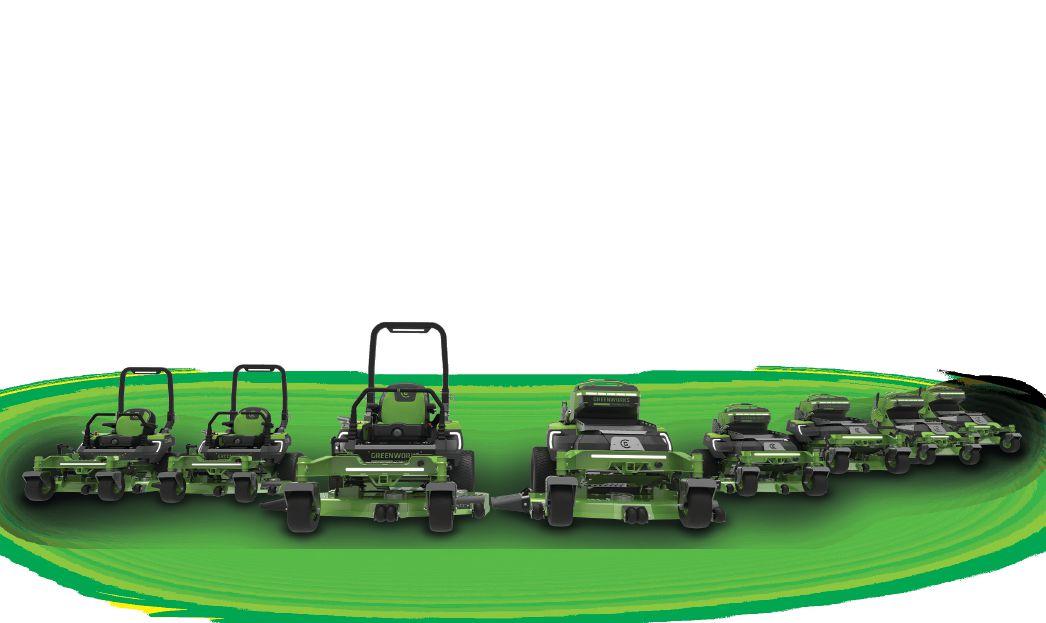
opening day as well as an awards luncheon and an assistant superintendents’ networking social
The event’s trade show will take place on Feb. 23 along with education sessions in the morning and afternoon. The association’s annual general meeting and evening social are also scheduled for the second day of the conference. Education sessions will continue in the morning of Feb. 24.
www.golfsupers.com
WCTA conference and trade show
The 59th annual WCTA conference and trade will be held Feb. 15-17 at the River Rock Casino Resort in
Richmond, B.C.
Four pre-conference sessions are scheduled for Feb. 15 and will cover such topics as sustainable strategies for reduced turf inputs, irrigation electrical troubleshooting and reel grinding.
Rogers Sportsnet’s Evanka Osmak will deliver the keynote address on the morning of the conference’s second day. In the afternoon, education sessions spanning four different tracks will be presented that include golf, sports turf and equipment technology.
Sessions covering the same four tracks will be offered again on Feb. 17 – the conference’s final day.
Trade show hours are 3 p.m.


to 6:30 p.m. on Feb. 16 and 10:30 a.m. to 1 p.m. on Feb. 17.
The WCTA’s annual general meeting will take place at 11:30 a.m. on Feb. 16.
www.wcta-online.com
Ontario Golf Course Management Conference
Blue Mountain in Collingwood is the venue for the annual conference and show of the Ontario Golf Superintendents Association which will be held Jan. 17-19.
Details of the education sessions weren’t available at press time, but 2½ days of seminars are to be offered.
The conference will include the OGSA’s annual general meeting on Jan. 18.
www.ogsa.ca
Ontario Turfgrass Symposium
The OTS, to be held Feb. 22-23 at the University of Guelph, provides education to professionals working in the lawn care, sports turf, golf, recreational facilities and nursery sod sectors of the turfgrass industry.
Attendees are also updated on the latest research and innovations within the industry.
The 31st OTS provides valuable continuing education credits for those who take in the education sessions.
Details of the sessions’ lineup weren’t available at press time.
www.opened.uoguelph.ca/ Ontario-Turfgrass-Symposium.

Loaded With Features and a Three Year Warranty:
9 Precision Tine Height Control - Light Tickle to Aggressive
9 Multiple Speciality Attachments: Drag Mat - Broom - Magnet
9 Towing - Fits on Low Horsepower Tractors to Quads
9 256 Spring Loaded High Strength Steel Tines
9 Soft Touch Turf Tires for Natural Turf, Synthetic Turf and Sand
9 Four Independent Floating Sections for Uneven Surfaces
Preferred All-Purpose Turf Tool Of:
Burnaby - Coquitlam - Surrey - Cowichan Sports Complex
Penticton - Westbank First Nation - Kelowna - Banff
Jasper - Red Deer - Edmonton - Calgary - Red Deer
Medicine Hat - Ft. McMurray - Rocky Mountain House
Taber - Saskatoon - Brandon - Ft. McLeod - Leduc
Multiple Ontario Golf Courses and Courses Worldwide www.woodbayturftech.com 800-661-4942

Natural Turf
Synthetic Turf Dirt & Sand Fields
Equipment Showcase
Bannerman’s “Easy Load” Truck Loading Ramp (B-TLR)
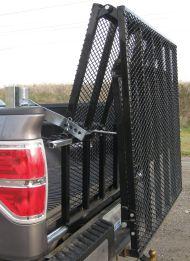
is easy to install with absolutely no welding required! It is powder coated black for durability during the winter, can easily be swapped between ramp and tailgate, has a universal fit for most major trucks, is lightweight constructed that is both tough and durable, and features spring-assisted folding. It can be used to load any and all equipment from large to small. Additionally, it can be used to load ATVs, motorcycles, furniture, appliances and more. New is a two-foot extension kit that is available and extends length of the loading ramp from eight feet to 10 feet. bannermansportsturfmagic.com
The Bobcat ZT7000 Means Business

Everything about the Bobcat® ZT7000 zero-turn mower is designed to boost your bottom line. Available with a 61- or 72-inch AirFX™ deck with air-gap baffles, you’ll leave behind an unmatched quality of cut. Transport speeds of up to 19 mph and mowing speeds of up to 13 mph ensure that you can knock out quality results, fast, while packing more work and profit into your day. From its tough construction to its pro-grade power, speed and fuel capacity, this rugged machine gives you hours and hours of unstoppable mowing power and profit-making productivity. bobcat.com
ECHO eFORCE™ 56V Battery System

The ECHO eFORCE™ Battery System provides a powerful option for professional landscapers and discerning homeowners who demand versatility and options in power sources across their fleet of outdoor power equipment. ECHO eFORCE™ 2.5Ah or 5.0Ah batteries deliver 56V of dependable, long-lasting power and quickly swap from product to product. It’s simple! One battery platform for all ranges of ECHO 56V cordless units. echo.ca/56V-Battery-System
Model 640 Bauman Drop Spreader – The Workhorse

Bauman Manufacturing has worked tirelessly to develop a line of equipment that effectively protects people and environments from the intensities of winter. Hydraulic, Electric, and Power TakeOff drive options, a heavy-duty steel body and powder coat finish and the unique distribution assembly ensures maximum performance and a consistent drop. Options include hopper extensions to increase capacity, protective galvanized lids, and a variety of mounting brackets to fit most makes and models of compact tractors and skid steers. Backed by a tradition of quality and with 10 models to choose from, Bauman’s has your de-icing needs covered. baumanmfg.com/
Husqvarna 580 Backpack Blower
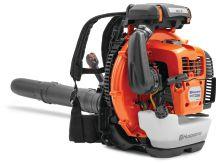
Buckle up and be blown away by the all-new Husqvarna 580 Backpack Blower! Weighing less than 28 pounds, this lightweight blower packs a powerful punch with 1,000 CFM of blowing force and air speeds of up to 220 mph. The 580 Backpack Blower features the industry’s largest fuel tank, allowing crews to work more efficiently with fewer refueling trips. They’ll stay comfortable all day long with the ergonomic harness and adjustable hip belt. This powerful blower is designed for commercial landscape maintenance professionals who demand the best in high performance, high productivity and all-day operator comfort. Learn more at Husqvarna.com. husqvarna.com/us/leaf-blowers/580bts/
Kress 8-Minute CyberSystem

With the new Kress Commercial 8-minute CyberSystem™ battery platform – providing 10 times the life cycles, two times the power output and the ability to recharge each 60v battery pack to 100% in only eight minutes – commercial landscapers can finally replace their messy gas-powered equipment without sacrificing performance, power or runtime.
The 8-minute CyberSystem™ will power a full line of Kress professional outdoor equipment, including commercial-grade backpack and handheld blowers, grass trimmers, edgers, chainsaws and hedge trimmers, as well as heavy-duty walk-behind commercial mowers. Landscapers in Canada can experience first-hand the power of Kress Commercial at Landscape Ontario Congress in January. kress.com/en-ca/8-minute-fastest-battery-charge/
Equipment Showcase

Kubota RTV 520
SNOW WON’T SLOW YOU DOWN.Heat up your winter in the Kubota RTV520’s optional heated cab as you take on snow with a durable and powerful diesel engine. Plow, sweep and blow through the season, even in tight spaces, as you outlast challenging weather and terrain. kubota.ca/products/RTV520-Series
Reist Industries Iron Ant
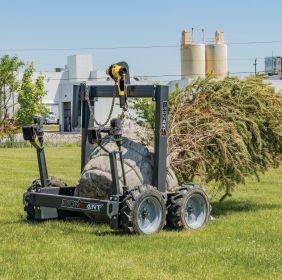
The Iron Ant is a must have for rental operations and landscapers. Designed to move compactor plates on and off trucks the Iron Ant can also be used to move them around a job site. Landscapers will appreciate its versatility for moving just about anything that needs to be lifted such as landscape rocks, tree balls, and even pavers. Easy to use, two high torque drills power the shafts providing full four-wheel drive and skid steer like operation. reistindustries.com
FDS 9200 - Turf Dethatcher & More
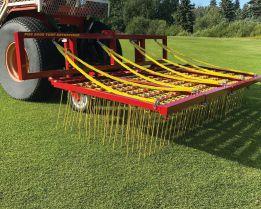
The FDS series is engineered to handle a variety of surfaces, from the contours and undulations of a golf course to the flat surfaces associated with multiple sports turf fields, dirt infields and even synthetic turf to maintain G-Ratings. ONE Piece of Equipment - ALL Field Types, That’s the FDS 9200. The economically priced unit can be mounted to a Quad ATV or a Three-Point Hitch Tractor. In addition, the FDS 9200 quickly allows water and fertilizer to penetrate the root zone as well as quicker germination of all types of grass seed during over-seeding. Check our all-surface demo video at: https://youtu.be/jjgnusHaqO8 woodbayturftech.com/products/fds-series-turf-dethatchers
Walker Mowers Model B27i

The Model B is compact and fast. It is a Walker Mower designed to run side discharge and mulch decks on difficult properties with hills, uneven terrain and obstacles, all while leaving a beautiful cut. The model B27i has a 26.5 HP Kohler Command Pro EFI engine, superior fuel efficiency and economy, and a 4.7 gallon (17.8 litre) fuel tank. Deck kit options include: Mulching 36”-52”, Discharge 36”-74”. Configurable and versatile, the Model B will meet professional expectations.
propowercanada.ca/walker-mower/
STIHL FSA 135 R Battery Brushcutter
HIGH POWER SOLUTION FOR PROFESSIONALS.
The FSA 135 R is the latest brushcutter in our bat tery-powered line-up that can be used in noise-sensi tive situations. It is a lightweight, powerful and effi cient choice for landscapers, municipal workers and those that have large yards to upkeep. The ergonomic loop handle makes it comfortable to operate and easyto manoeuvre, while also providing a three-step speed adjustment with LED light. Built with a metal mesh air filter, it delivers a longer service life and provides optimum motor cooling. en.stihl.ca/STIHL-Products/Battery-Power-Madeby-STIHL-/Battery-Brushcutters/2126160-83158/ FSA-135-R.aspx
Wood Bay greenIRON 3900
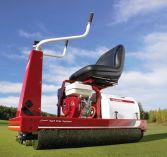
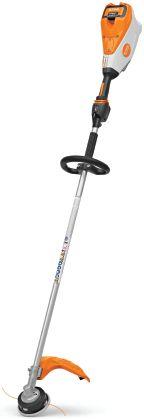
Top courses demand - CONSISTENT, TOUR-QUALITY GREENS. Roll your greens to perfection with our greensIRON 3900 golf greens roller. This is the top rated greens roller by golf course superintendents everywhere. Wood Bay Turf Technologies’ greensIRON 3900 turf roller will raise the standard of your greens to Tour quality.
FAST & EFFICIENT - ECONOMICAL OPERATIONS - LOW MAINTENANCE
Golfers will love the smooth putting surfaces achieved with the greensIRON 3900 turf roller. The greensIRON golf turf roller also has a light footprint, lighter than a person making a putt. Load and unload with our supplied trailer in seconds. Watch our demo video: https://youtu.be/XSMXRsBzzAw woodbayturftech.com/products/golf-greens-roller

Health & Safety
By CCOHS
The Canadian Centre for Occupational Health and Safety (CCOHS) promotes the total well being of workers in Canada by providing information,
Preparing for extreme winter weather
Like many other countries, Canada is seeing an increase in the number of extreme weather events happening each year due to climate change. In 2021 alone, there were 13 catastrophic weather events causing billions of dollars in damages (Government of Canada, 2021). These events can take the form of heat waves, wildfires, floods, tornadoes, hurricanes, hailstorms, or smog. In the winter months, climate change can bring extreme cold weather and harsh winter storms.
During an emergency, important decisions need to be made swiftly. A lack of preparation, resources, protocols, or trained personnel can lead to panic – the consequences of which can be severe. A well-developed emergency response plan that accounts for each type of climate emergency can reduce the risk of worker injuries and incidents, and prevent or minimize damage to property, equipment, materials, and the environment.
Start with hazard identification and risk assessment
An extreme weather event may not have happened near your workplace but that doesn’t mean it won’t have an impact. Climate emergencies can bring about hazards such as fires, explosions, poor air quality, building collapses, structural failures, spills, and the unintentional release of chemicals. You may also have to contend with equipment malfunctions, loss of power and water, flooding, ice-covered surfaces, dangerous driving conditions or stranded workers.
Perform a vulnerability assessment to identify which extreme weather events could occur in your area, then determine the potential hazards and risks for workers and the organization. These hazards and risks will depend on several factors such as location, weather trends, severity, as well as the size and type of your workplace. What are your capabilities to respond to an emergency? Do you have

ready access to emergency services under regular circumstances? Will these services be available to your specific workplace in a widespread emergency?
After all the hazards have been identified for each climate emergency, conduct a risk assessment to evaluate the risks that each of these hazards pose to workers, property, and the environment. To assess risk, consider the likelihood and severity of harm or damage. This assessment will help with prioritization and resource allocation during emergency planning and, most importantly, the development of proper emergency response procedures.
Develop an emergency response plan
Once the potential risks and consequences of each climate emergency have been identified, determine the actions required to protect workers, property, and the environment.
Emergency response plans for extreme weather events should include written procedures on how to respond, along with the responsibilities of designated people. Can steps be taken to prevent or minimize the impact of an emergency? What resources will be required (such as trained personnel, firefighting and rescue equipment, personal protective equipment, first aid supplies, communication equipment, or power generators)? Where are they located? Are potential impacts on these resources also being accounted for? Will other emergency supplies need to be
provided such as food and water? Detailed lists of emergency response personnel including their cell phone numbers, alternate contact details, and their duties and responsibilities should be readily accessible within the plan.
Outline a process for checking the local weather forecast and air quality, and a communication plan for sending weather alerts to workers. Include emergency procedures for workers who may not be in the primary workplace, including those who work outside, travel, work in remote areas, work alone, or are responsible for overseeing critical processes and equipment. You’ll want to include details on how plans will be initiated and communicated with workers in the event of an emergency. Note that the usual channels of communication cannot be relied upon to function normally.
Plans should factor in how long it will take for internal and external emergency services to respond. In the event of climate emergencies, there could be a delay in response due to an increase in demand for these services. Alternately, your organization may be able to offer services to others in an emergency. Emergency planning is important from both a workplace and community perspective.
Familiarize the workplace with extreme weather protocols
Given the broad range of potential climate emergencies, the plan and protocols are likely to be contained in a substantial document. The plan should also provide workers with separate written instructions about their emergency response duties. Outline procedures on how to safely monitor, shut down or continue to operate critical processes, equipment and other devices that may cause injuries or damage in the event of a power failure or malfunction.
Ensure your emergency preparedness committee is reviewing the plan and its effectiveness regularly so it can be revised when needed.


CUT A BIG JOB DOWN TO SIZE.

GET A PERFECT CUT EVERY TIME WITH BOBCAT ZERO-TURN MOWERS. If you have the will to be a cut above, we have the way to rule the turf. See Bobcat® zero-turn mowers at your local dealer.









